

Andrew Maclean
4 Days Ago
There's nothing quite like the Range Rover Velar SV Autobiography. It's intoxicating.
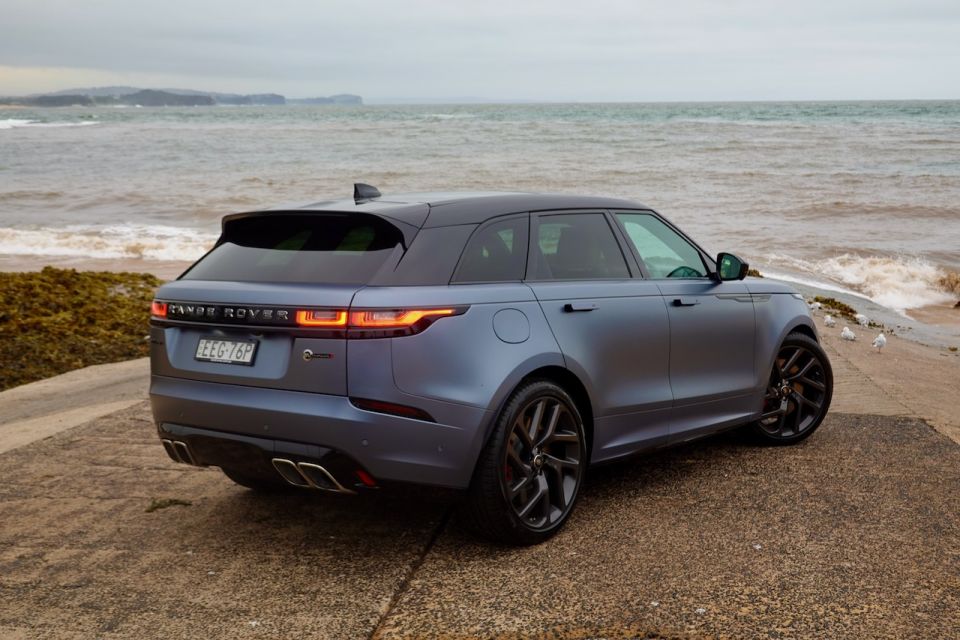
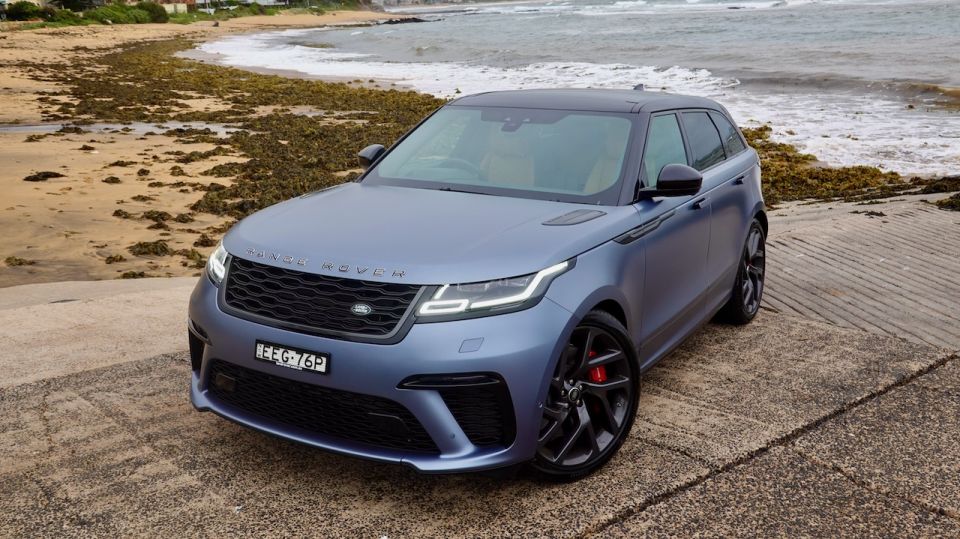

Senior Road Tester
New from
$81,647
excl. on-roads

Senior Road Tester
New from
$81,647
excl. on-roads


Senior Road Tester
New from
$81,647
excl. on-roads

Senior Road Tester
New from
$81,647
excl. on-roads
Quickly see how this car stacks up against its competition. Select any benchmark to see more details.
CarExpert does the hard work to get you the best price. No negotiating, no hidden costs, just expert help and real savings on your next new car.
The Range Rover Velar is a standout car no matter how you look at it, but before we get into this review, let me tell you a little story.
Norway is one of the most sparsely populated countries on the planet, spanning more than 50,000 islands with 83,000km of coastline.
Connecting its 5.4 million inhabitants are more than 18,000 bridges measuring over 482km. Even more astonishing are the 900 tunnels beneath the seabed and mountains, running a combined of 756km.
It’s also the home of The Troll’s Ladder, one of the world’s most celebrated roads. Named after the mythology surrounding the mysterious Troll, it comprises 11 sensational hairpin turns on your 859m ascent – where you’ll also pass some huge rocks, some 20m high.
Trolls walk behind these giant stones, watching you and waiting. That’s what the locals told us at the Range Rover Velar launch in 2017.

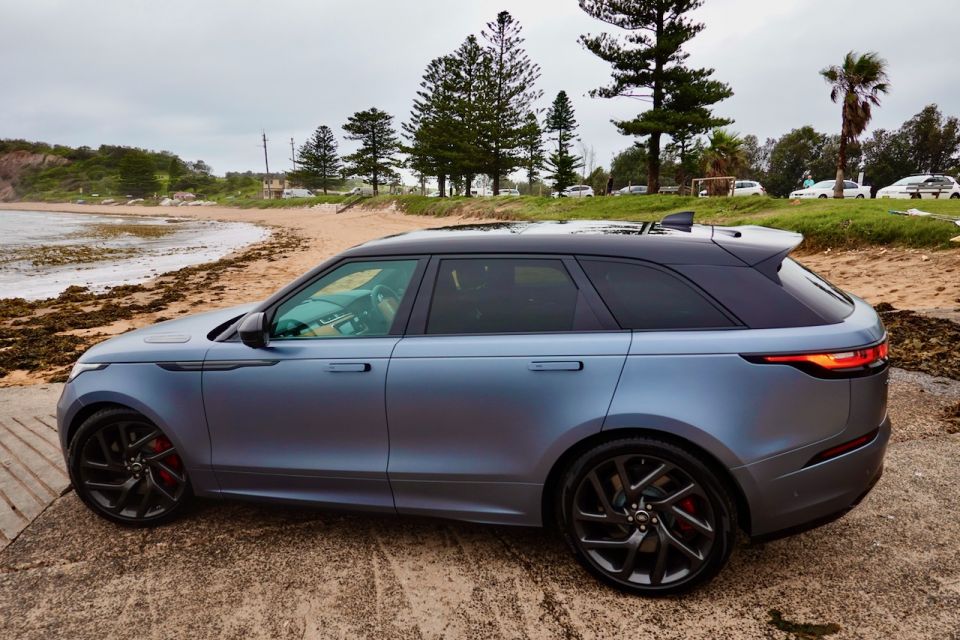
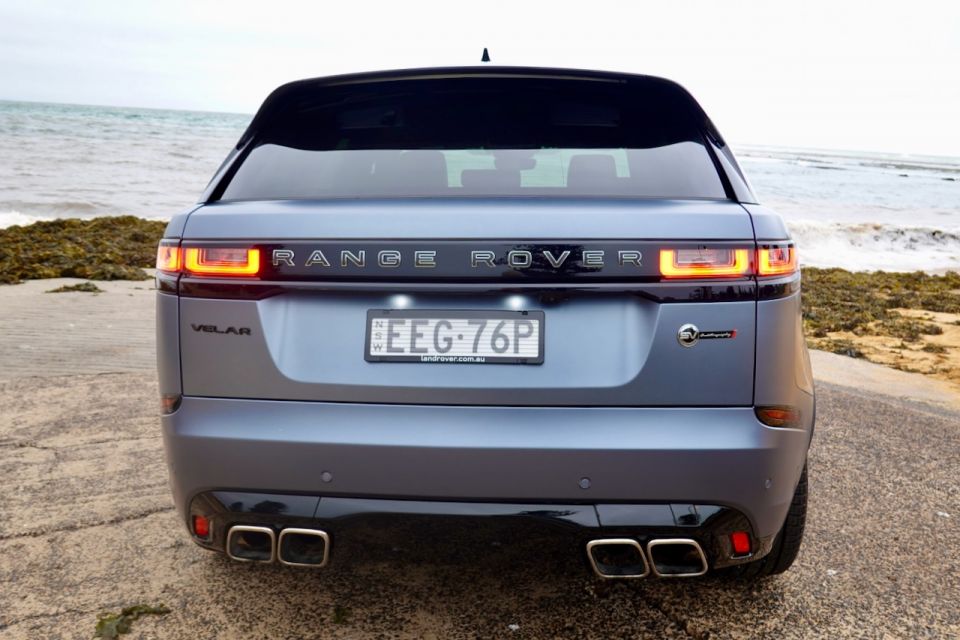
My journey with the Range Rover Velar goes back even further, to the London Design Museum earlier in the same year.
Social media channels went into meltdown when I posted pictures of the vehicle, and in less than 24 hours more than 13 million people had grabbed a peek.
The Velar was nothing less than a game-changing design, best described by its outspoken designer, Gerry McGovern, who called it “the greatest demonstration of modernity thus far”.
But it didn’t blow me away in Norway, at least not on the road. They well and truly nailed the premium feeling, as well as the design, but there was something missing.
It didn’t quite measure up to the Range Rover Sport in the handling department, nor its Range Rover stablemates when it came to outright luxury. A jack of all trades and master of none was my takeaway from that launch event.

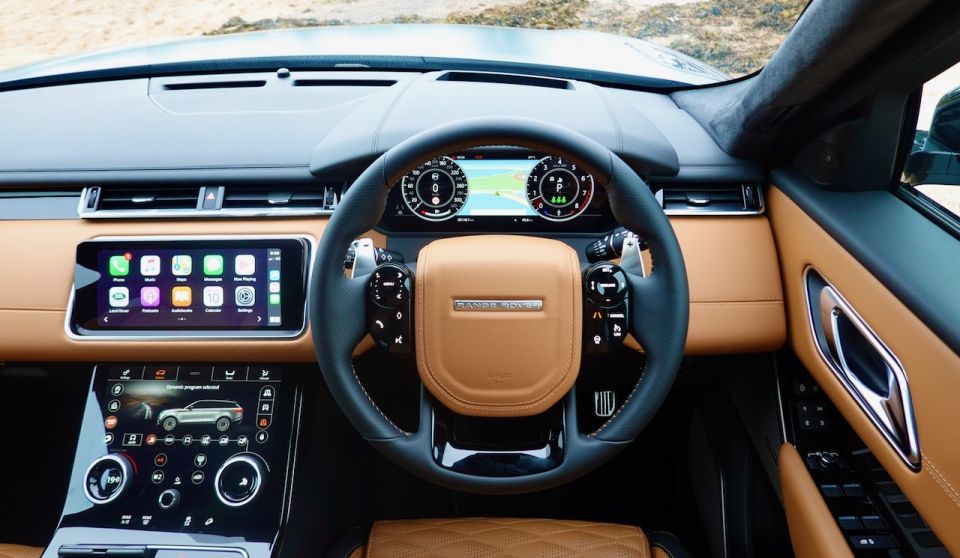

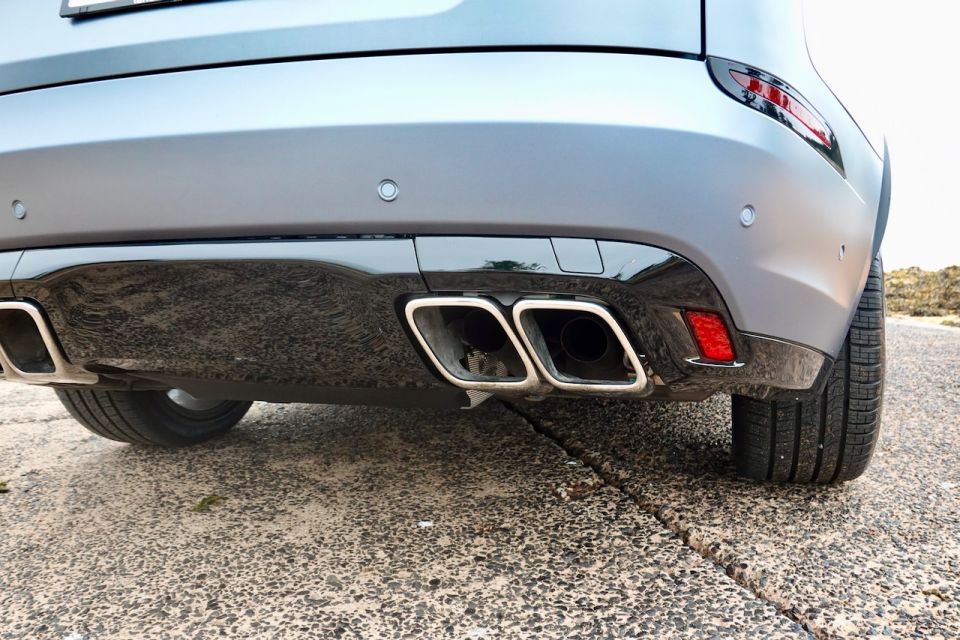
For a while, the most powerful Velar variants were the D300 and P380 petrol, neither of which quite cut it.
You were still better off with a Range Rover Sport or a BMW X5 M50d, if getting where you wanted to go quickly was a priority.
Three years on, it still looks fresh out of the design studio – and any love I might have lost all but vanished the moment I caught a glimpse of the latest and greatest version; the Range Rover Velar SV Autobiography Dynamic Edition. A bit of a mouthful, I agree.
I’m still confused about the colour of this thing. Jaguar Land Rover call it SVO Premium Byron Blue Satin. I’m calling it matte grey, which must make me hopelessly colour blind. I don’t see a single blue hue across the entire vehicle. Do you?
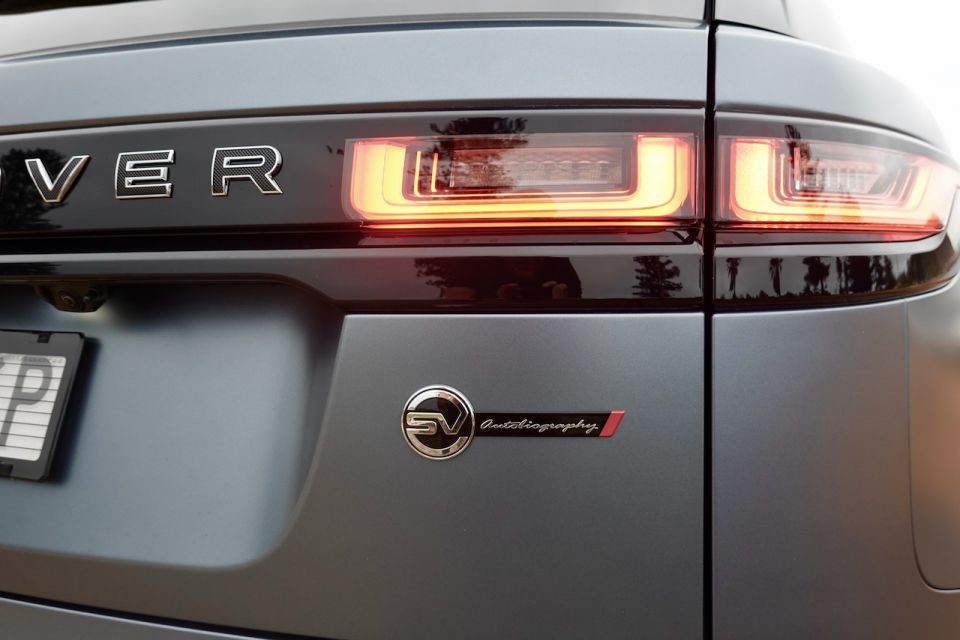
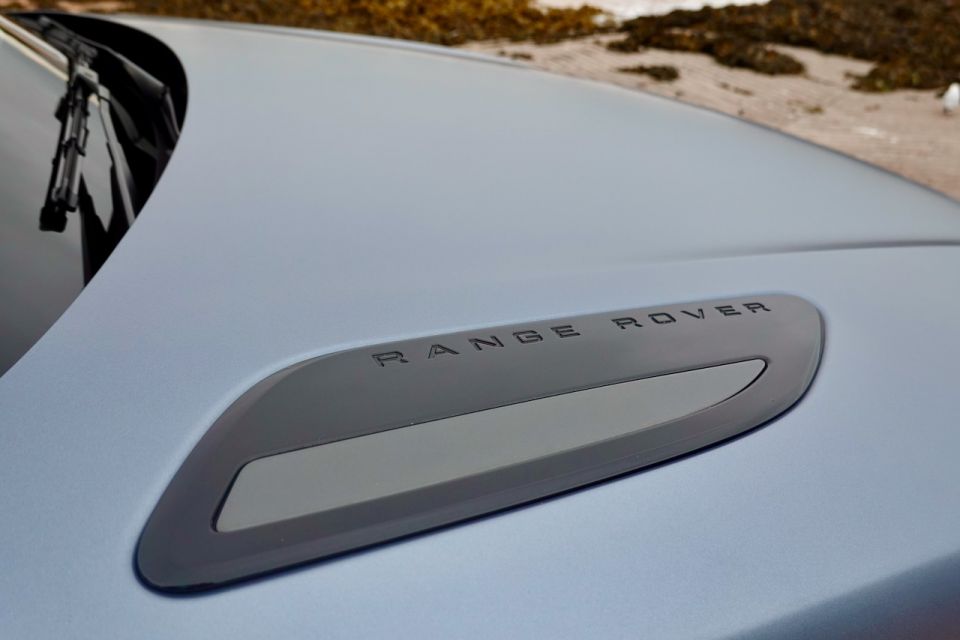
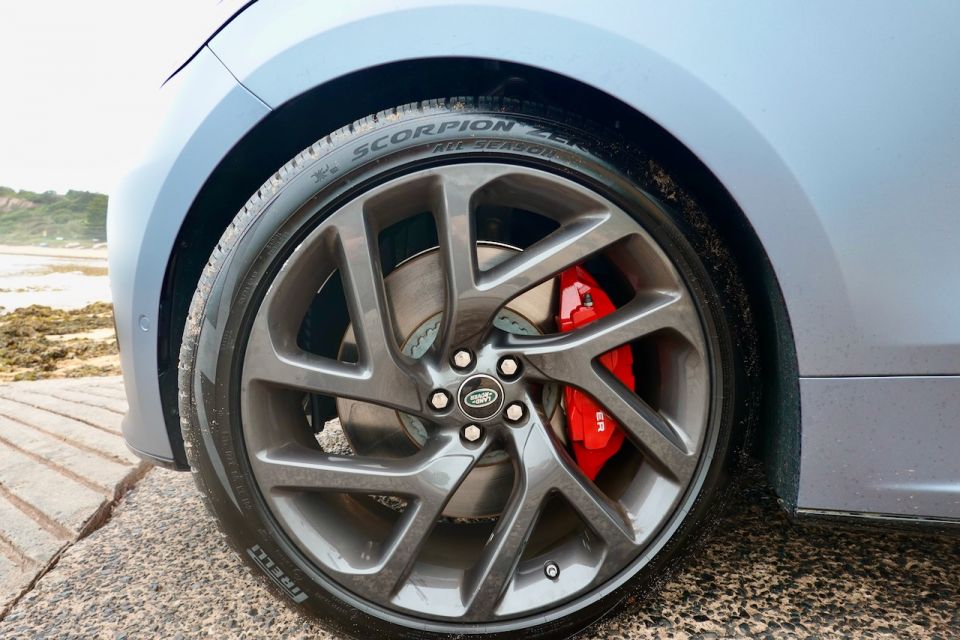
It’s the Velar flagship, so there are no bargains in this rarefied segment. List price is $176,412 before on-road costs.
Despite being chock-a-block full of kit, there’s also a bevy of options on offer – and our tester was fitted with a bunch, including that sexy paint. Yours, for the low price of just $14,600…
Other extras like the steel weave carbon fibre trim finisher ($3020), head-up display ($2420), the driver assist pack with a 360-degree surround camera, adaptive cruise control, and steering assist ($2223), and 22-inch gloss dark grey wheels ($1690).
It was also equipped with the convenience pack ($1390), adding rear seat remote levers, a load space partition net, the activity key, and a power socket pack.
And on top of those items our tester also had privacy glass ($890), an illuminated metal load space scuff plate ($640), all-terrain progress control ($640), and Terrain Response 2 with a dynamic drive mode ($430).
Our tester’s price topped out at $204,355 before on-road costs. To be perfectly honest there isn’t a single option here (besides the special paint) that shouldn’t be standard on this top-spec Velar.
After all, it’s a massive price jump from the P380 HSE R-Dynamic and P300D R-Dynamic are priced from $128,172 before on-roads and $128,000 before on-roads. The SVA asks a minimum of $48,000 over the next model in the range.
Trying to find a direct competitor for the Range Rover Velar SV Autobiography is a bit tough.
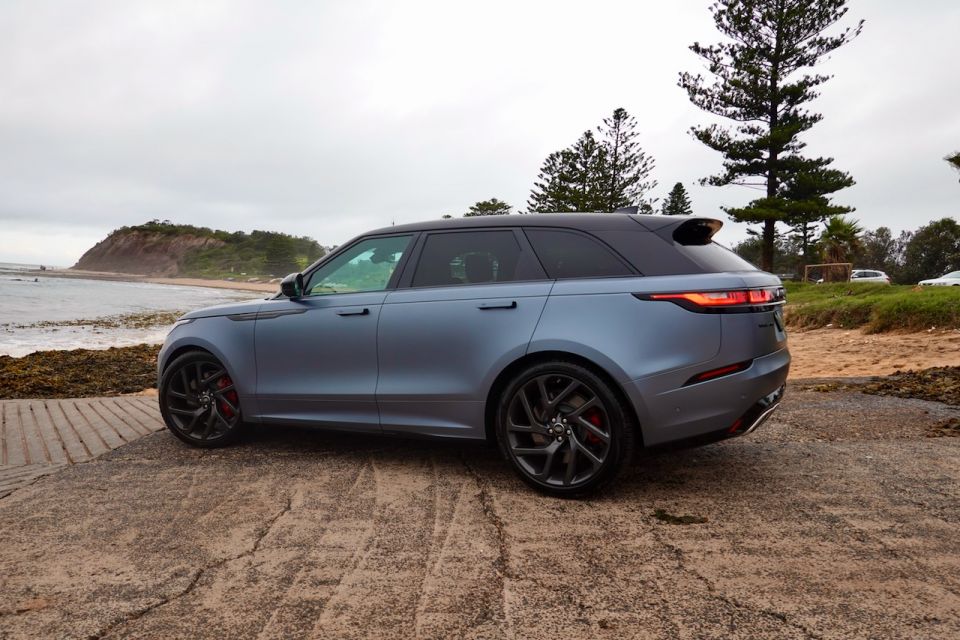

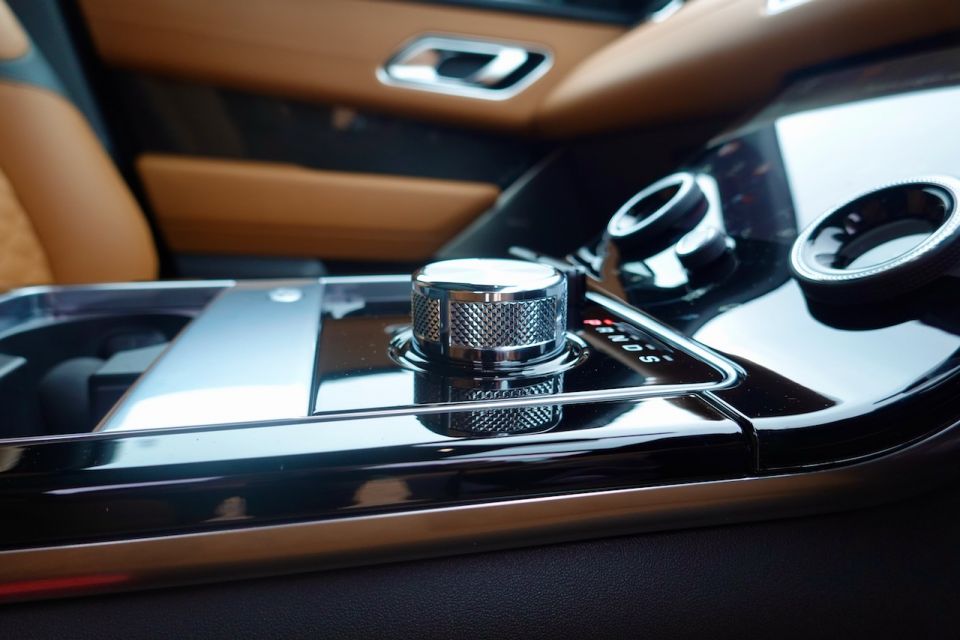
At a stretch you could say the GLC63 S AMG Coupe, but the styling doesn’t come close, despite big performance numbers and a cheaper price.
There’s also the BMW X4 M Competition, but again it can’t match the Velar aesthetically. It’s also quicker and cheaper than the Velar.
Closer to home for Range Rover there’s the Jaguar F-Pace SVR.
First starters, you’ll own a limited run Range Rover with special pedigree. They’re only building it for a year, so move fast if you’re keen – orders will cease at end of April.
Any reservations I might have had with Velar’s performance are quashed with the SVA, developed by the Special Vehicle Operations team at Jaguar Land Rover.
The challenge was to provide a significant lift in performance and handling without compromising composure, off-road ability, and the refinement Range Rover owners expect.
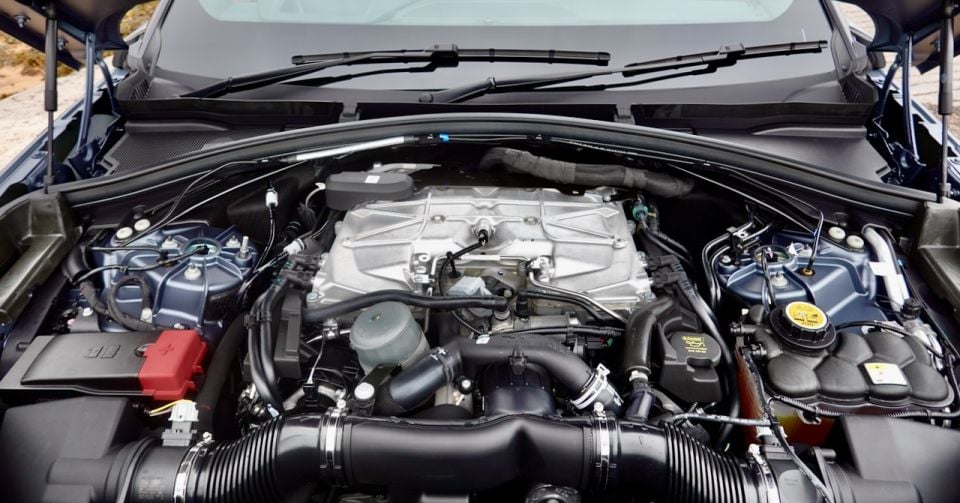
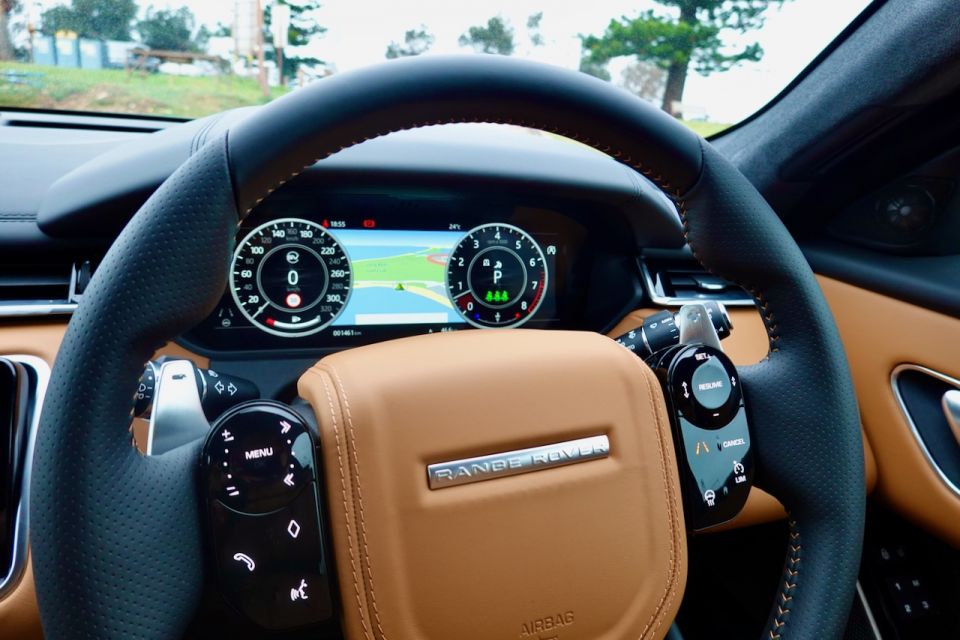

The resulting vehicle is closely related to the related Jaguar F-Pace SVR with which it shares a 5.0-litre V8 supercharged engine, which oddly enough is missing an engine cover. It’s essential for engine cooling, they tell us.
Up front, it has a more aggressive bumper with bigger air intakes feeding the engine, and cooling the uprated 395mm brakes. The rear discs are larger again, by just one millimetre.
Standard rims are forged 21-inch units, but our tester was fitted with 22-inch split-spoke alloys. There isn’t a better-looking wheel on the market for this vehicle.
Even the Range Rover lettering on the bonnet and tailgate is special. Each letter is the a two-piece component encompassing a knurled finish on the metal part. Some might say it’s a tad obsessive, but it’s this kind of attention to detail buyers appreciate at this price.
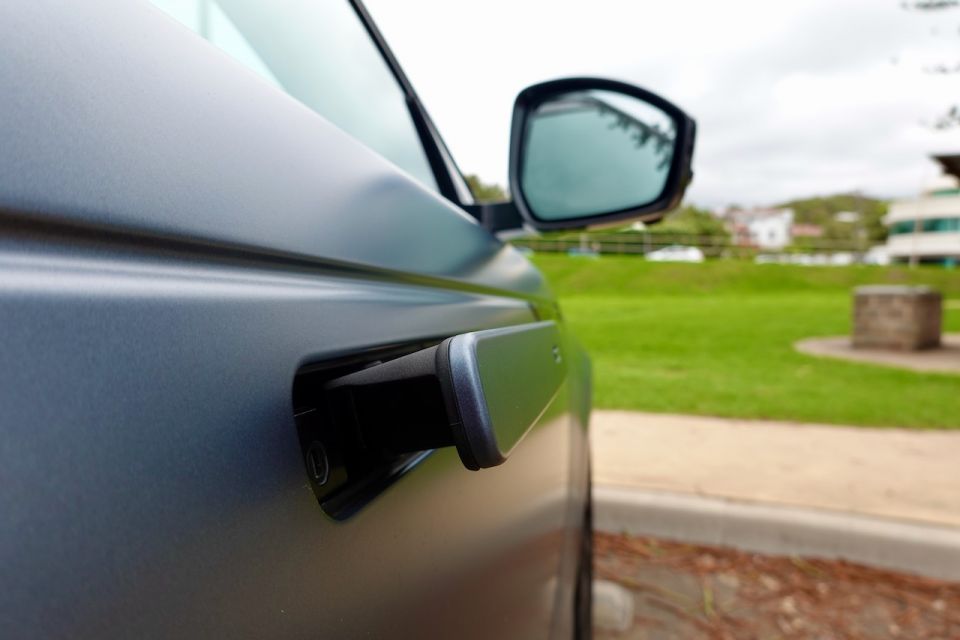

Around the back there’s a revised rear bumper with tasteful quad exhaust tips which really set this vehicle off.
The flush-mounted door handles are another stylistic treat, which magically pop out as you approach the vehicle. Better still, they’re robust so you don’t have to be gentle. And, don’t worry about these freezing up, they’ve been tested in temperatures that would rival the deepest parts of Siberia.
The Velar slots between the likes of a Porsche Macan (4.68m) and Cayenne (4.9m) for length.
Further afield there’s the BMW X3 at 4.7m long. While Velar is classed as a medium SUV, at 4.8m long it’s definitely at the bigger end of that group, and just about the perfect size for our family of four.
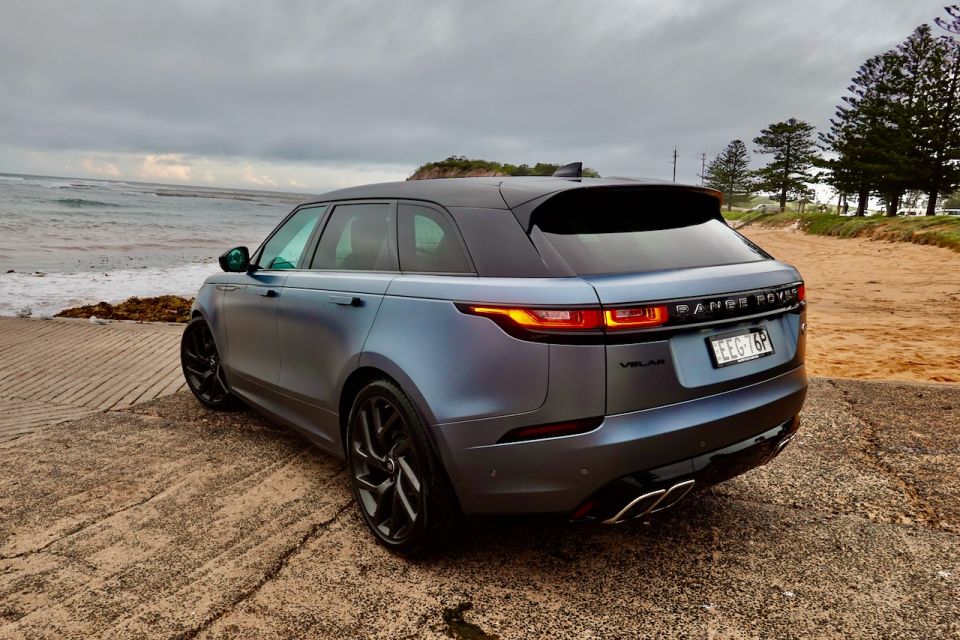
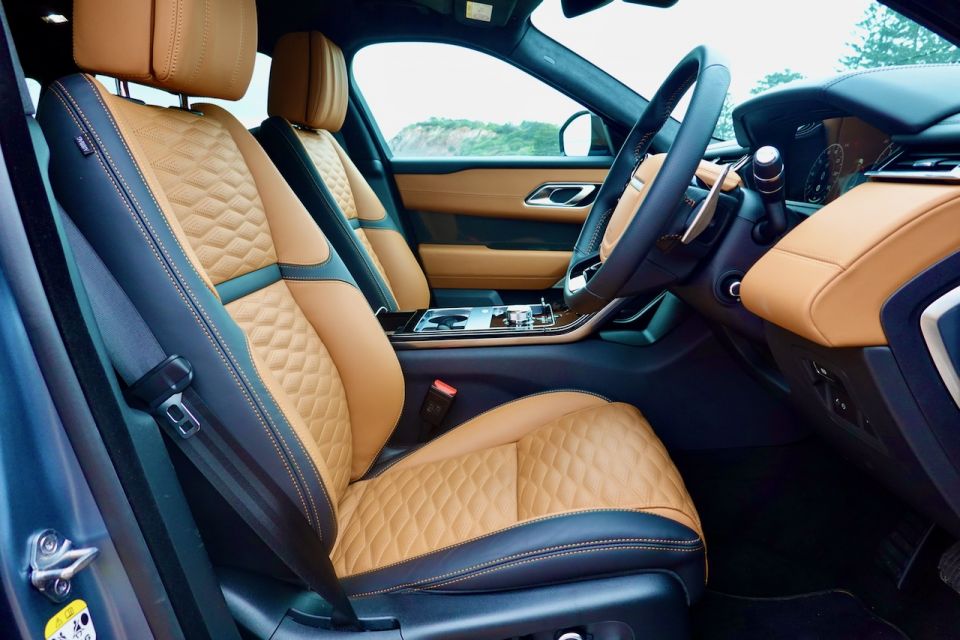
The Velar has a five-star Euro NCAP safety rating and scored 93 per cent for adult occupant protection, 85 per cent for child occupant protection, and 74 percent for pedestrian protection.
The car gained stop/go for its radar cruise control, sitting alongside a full complement of safety systems, such as traffic sign recognition, rear cross-traffic monitor, lane-keeping assist, a driver condition monitor, blind-spot monitoring, tyre-pressure monitoring, and a surround-view camera.
Our tester also added a steering assist to adaptive cruise control along.
Let’s not forget Velar’s on-demand all-wheel drive system, that really does add another level of traction in the wet. That’s something we tested extensively, you can flatten the throttle from a standing start and there’s zero wheel spin. It’s very reassuring.

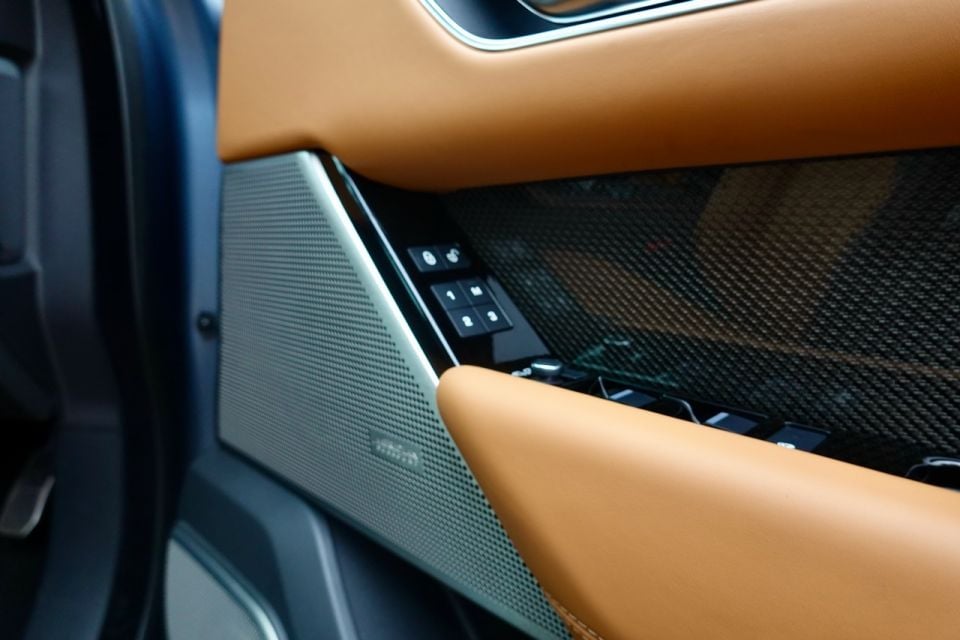
Looks alone will be more enough to win most genuine buyers at this level, but the top-of-the-range Velar offers much more, not least of which is the kind of luxury space you expect to find inside a full-blown Range Rover Vogue.
Climb aboard and you’re greeted with beautifully-upholstered 20-way sports seats in combination ebony and tan leather with contrast stitching. These are not run of the mill chairs. They’re hand-crafted seats with a quilted finish, thousands of perforations for heating and cooling, and enough bolstering to hold you upright in the corners.
You won’t find cheap plastics up front in the Velar, either, not a single square of the stuff. It’s either hide, deep piano black, or some of the most exquisite carbon-fibre weave I’ve yet to see in any car bar perhaps a Bentley Flying Spur.
Same goes for the suede headliner in ebony. It’s first rate.
The steering wheel rim is trimmed in perforated leather while the leather boss looks like it’s straight out of a Hermes shop. Lower down on the console the rotary gear selector and controls for the infotainment controls feature diamond-cut knurling.
No plastic paddle-shifters here either, instead, they’re fashioned in tactile aluminium. Look up, and you’ll find the standard panoramic roof in two parts matching the contrast inserts on upholstery.

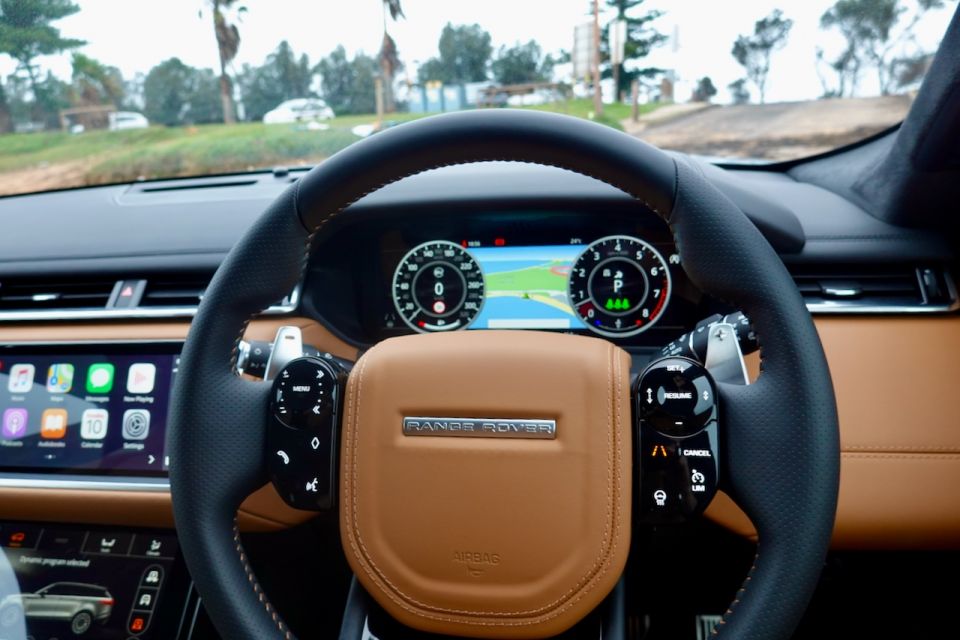
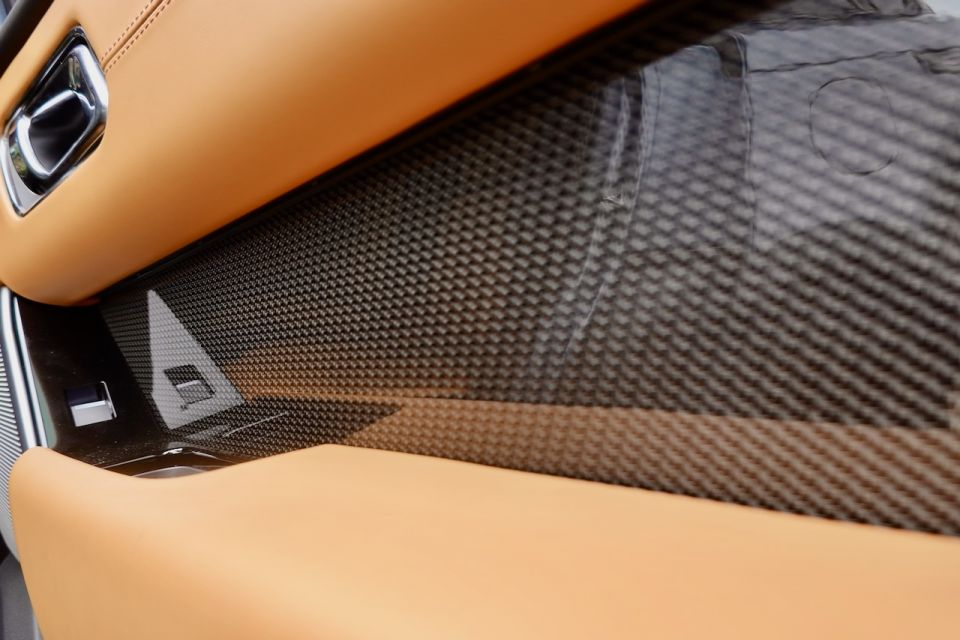
The giant instrument display is brilliant, not just for its clarity and colour, but for its customisation and functionality. The two 10-inch infotainment screens dubbed Touch Pro Duo still look state-of-the-art two-years on, but watch those oily fingertips or keep a microfibre cloth close by.
Creature comforts are laid on thick in Velar. The full suite includes Matrix LED lights with DRLs and a superb Meridian surround sound system, Apple CarPlay and Android Auto, digital radio, four-zone climate control, four USB ports, and a Wi-Fi hotspot for up to eight devices.
There’s also massage front seats, heated rear seats, and automatic everything.
Rear legroom is less than I would have expected for a vehicle of this length, but it very much depends on where the driver sits. Luggage space is excellent, with 673L behind the rear seats expanding to 1731L when folded.
Moreover, there’s a good-size aperture and height for loading, and that second row is a convenient 40/20/40 split-fold setup operated via remote levers in the boot.
Even the cooled glovebox can swallow up to 7.5L of stuff, while the door pockets can store 750ml bottles for longer hauls. There’s not much room in the centre-console bin (it’s too shallow) but there’s space for phones and wallets behind the floating console in front.
Land Rover’s proven 5.0-litre supercharged V8 developing 405kW of power and 680Nm of torque does the work here, and gets the SVA from 0-100km/h in 4.5 seconds flat through an eight-speed automatic transmission sending drive to all four wheels. Top speed is 274km/h.
Interestingly, it’s not the most powerful version of this motor. That’s reserved for the full-fat Range Rover Sport SVR, which bumps things up to 423kW and 700Nm but is no quicker than Velar SV Autobiography.

By way of comparison, the BMW X3 M Competition uses a twin-turbo straight-six making 375kW of power and 600Nm of torque for a 4.1 second sprint to 100km/h, while the GLC 63 S AMG employs a twin-turbo V8 putting out 375kW of power but a stout 700Nm of torque for a rapid 3.8 second sprint.
Hit the rather awkwardly-positioned starter button and you (and your neighbours) will be very aware you’re in something special. It sounds war-like with its initial bark-to-life routine. It’s not a full-blown SVR, but it sure sounds like one.
That’s the variable active exhaust system at work, which is 7.1kg lighter than the standard set-up.
Even if you’re relatively light on the throttle there’s still a delicious V8 growl to this engine. If you’re like me, you’ll want to tap the capacitive button on the console – the one with the pic of the dual-exhausts – because the moment you do and give the Velar a decent prod the stairway to heaven unfurls.
At full blare it’s 100 per cent neighbourhood-wakening stuff. Laughable, but at the same time intoxicating. It’s the same kind of thunderous rumble you might expect from a Challenger tank rather than a luxury SUV. Land Rover has properly nailed it.
I’m making the call it’s actually louder than the Jaguar F-Pace SVR under full throttle.

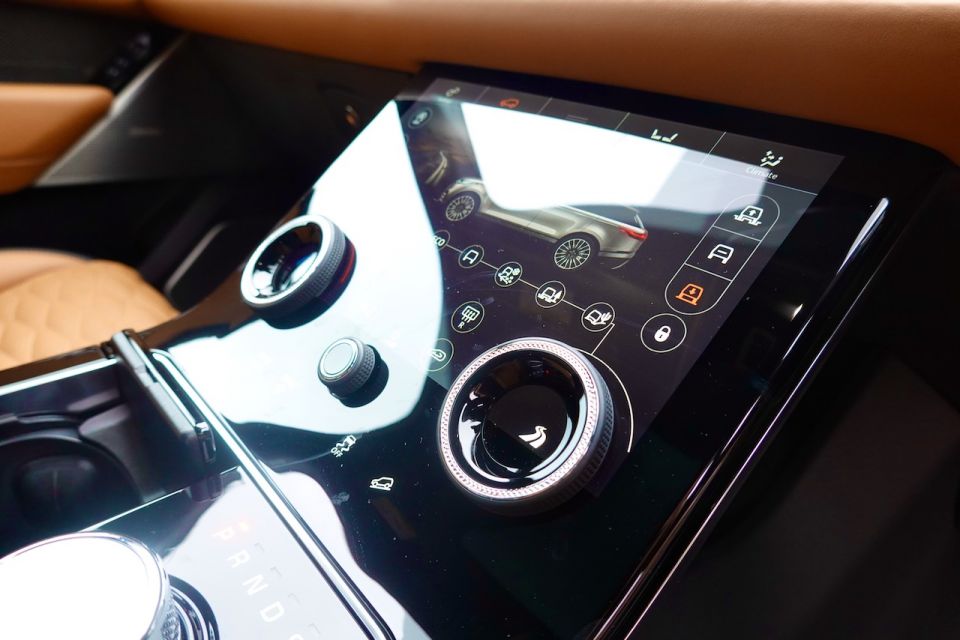
For some (I’ll count myself in that group) the Velar’s profile and the racket it makes will be enough. The fact it delivers dynamically is a bonus, and something I think lesser variants lack.
The Velar SVA is a different proposition. It can be a tad high-strung at low speeds, at least in Dynamic mode, wanting to leap out of the gate with the slightest provocation. It’s worth putting up because of the extra urgency and serious mid-range pull that ensues.
It doesn’t feel explosively quick like a BMW X5 M or the Lamborghini Urus, it’s far more measured in the way it unleashes its power. I’d argue the SVA has the balance of power and handling dialled in just right. All the major controls feel perfectly in sync.
Thankfully there’s a less frenetic driving mode better suited to the stop/start crawl, precisely the point at which the Meridian sound system is best experienced without interruption from the exhaust.
Everything has been honed to deliver more excitement with this version of Velar, especially in the ride and handing department. All the calibrations are bespoke, from the AWD and active rear locking differential, to the eight-speed transmission, steering, and air suspension.
Ride comfort is good in either drive mode. Around town there’s good compliance over larger bumps and even broken road is effectively absorbed. There’s some body roll if you hook in to a corner hard enough, but never does the Velar feel awkward or out of its depth.
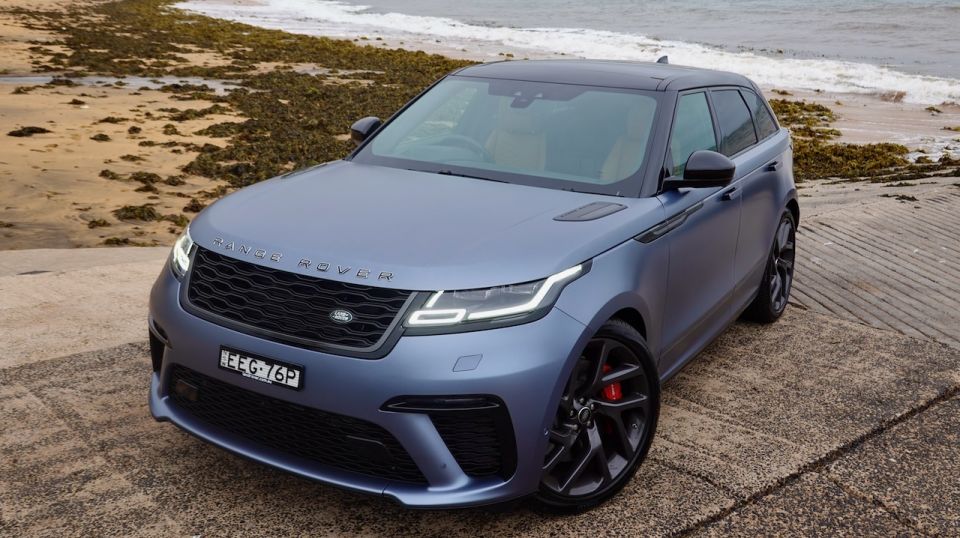
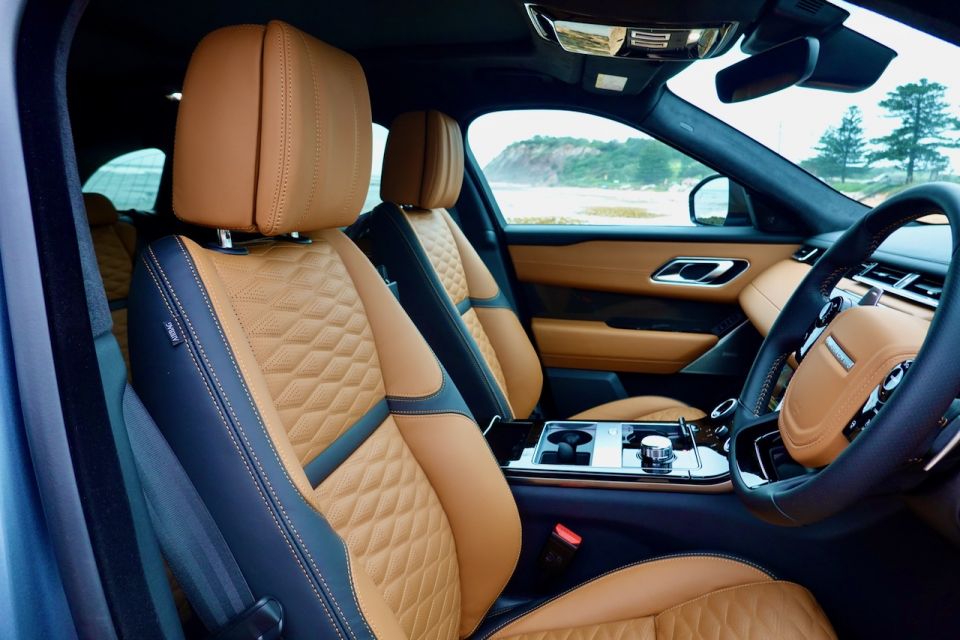
Switching to Dynamic turns up the dial and you’re ready for to assault your favourite roads. The chassis stiffens up and roll is reduced to a minimum. What’s more, it feels solid and very dependable with good feedback through the steering wheel.
The all-wheel drive system sends as much as 100 per cent of torque to the rear axle for a lovely rear-biased feeling when you get the opportunity to nail it early on corner exits.
It’s not as responsive or as accomplished as the F-Pace SVR, but it’s more refined all round. And all this while riding on those inner-tube size 22-inch rims. It’s quite impressive.
Those wanting an off-road evaluation of the hard-core Range Rover Velar will have to wait.
In the meantime, with Land Rover’s edict that each of its models will be class leaders in off-road capability, our past experience with the Range Rover and Range Rover Sport, as well as the arsenal of active all-wheel drive systems on board should give buyers confidence to tackle dirt roads or fire trails at least.
Drive hard (you’ll want to) and the Velar is thirsty. We saw more than 20L/100km on the gauge. More restrained driving will see drivers get close to the 12.3L/100km from the spec sheet, but mostly we averaged more than 16L/100km.

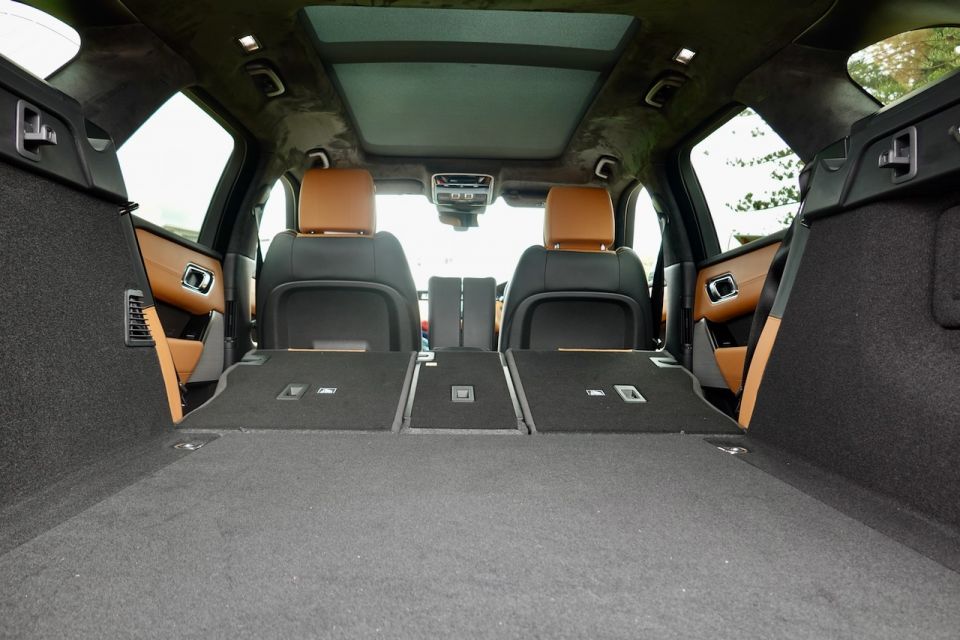
CarExpert does the hard work to get you the best price. No negotiating, no hidden costs, just expert help and real savings on your next new car.
The Velar SV Autobiography is covered by a three-year, 100,000km new car warranty, two less than Mercedes-Benz, Genesis, and Volvo.
However, Land Rover offers five-year service plans for Velar, with a maximum 130,000km at a cost of $3750. It can be purchased up to or at the time of the first service.
There’s no full-size spare, but there is a space-saver wheel under the boot floor.
After my takeaways from the Velar launch I wasn’t really expecting to be blown away by a performance model – even from Special Vehicles Operations.
It shows how perceptions can be misleading. This is one vehicle I may not be able to live without thanks to its standout looks, luxury fit-out, and performance makeover that should satisfy anyone who likes the sound of a supercharged V8 and the way it pulls this thing out of corners.
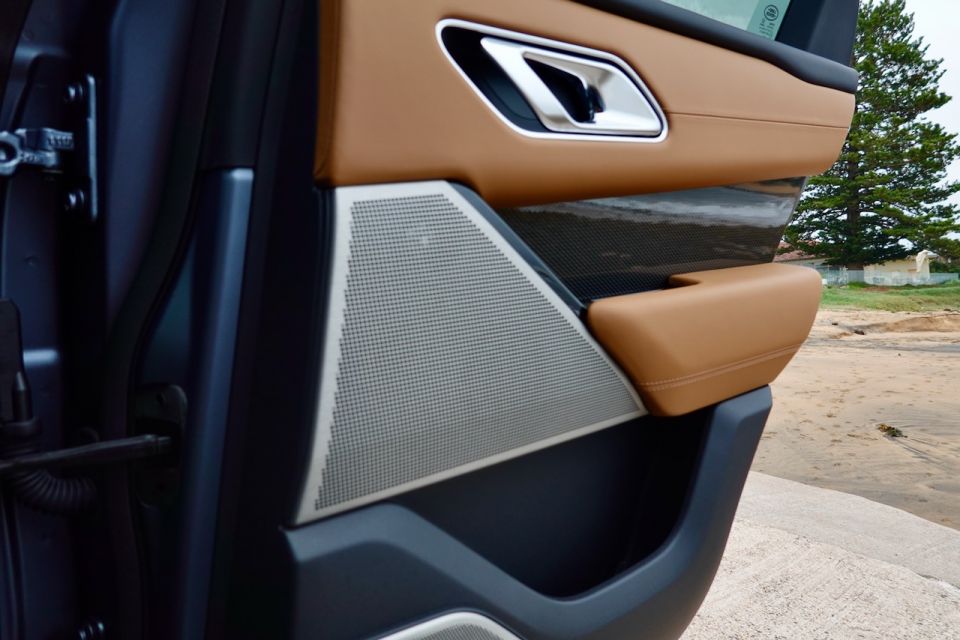


I’ll likely be accused of drinking a little too much of the Land Rover Kool-Aid but there aren’t a lot negatives here, other than its more a four-seater than five.
Will anyone care once they hit the starter button?
CarExpert does the hard work to get you the best price. No negotiating, no hidden costs, just expert help and real savings on your next new car.


Andrew Maclean
4 Days Ago
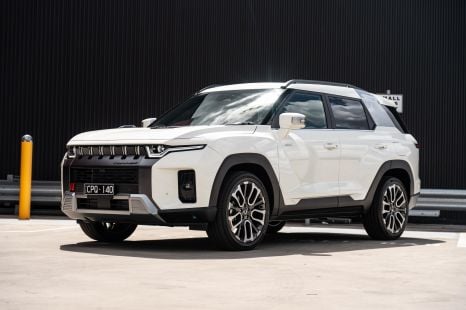

Max Davies
4 Days Ago


Matt Campbell
3 Days Ago
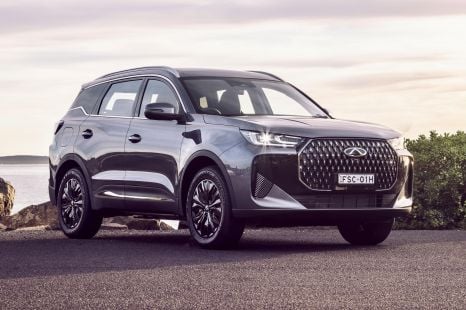

Max Davies
2 Days Ago


Josh Nevett
1 Day Ago
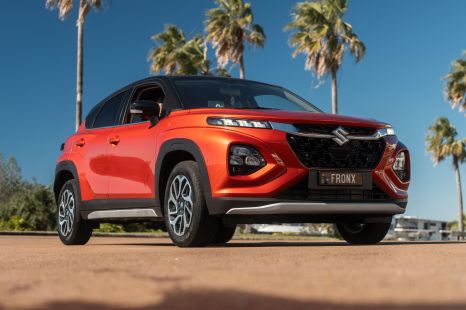

William Stopford
18 Hours Ago